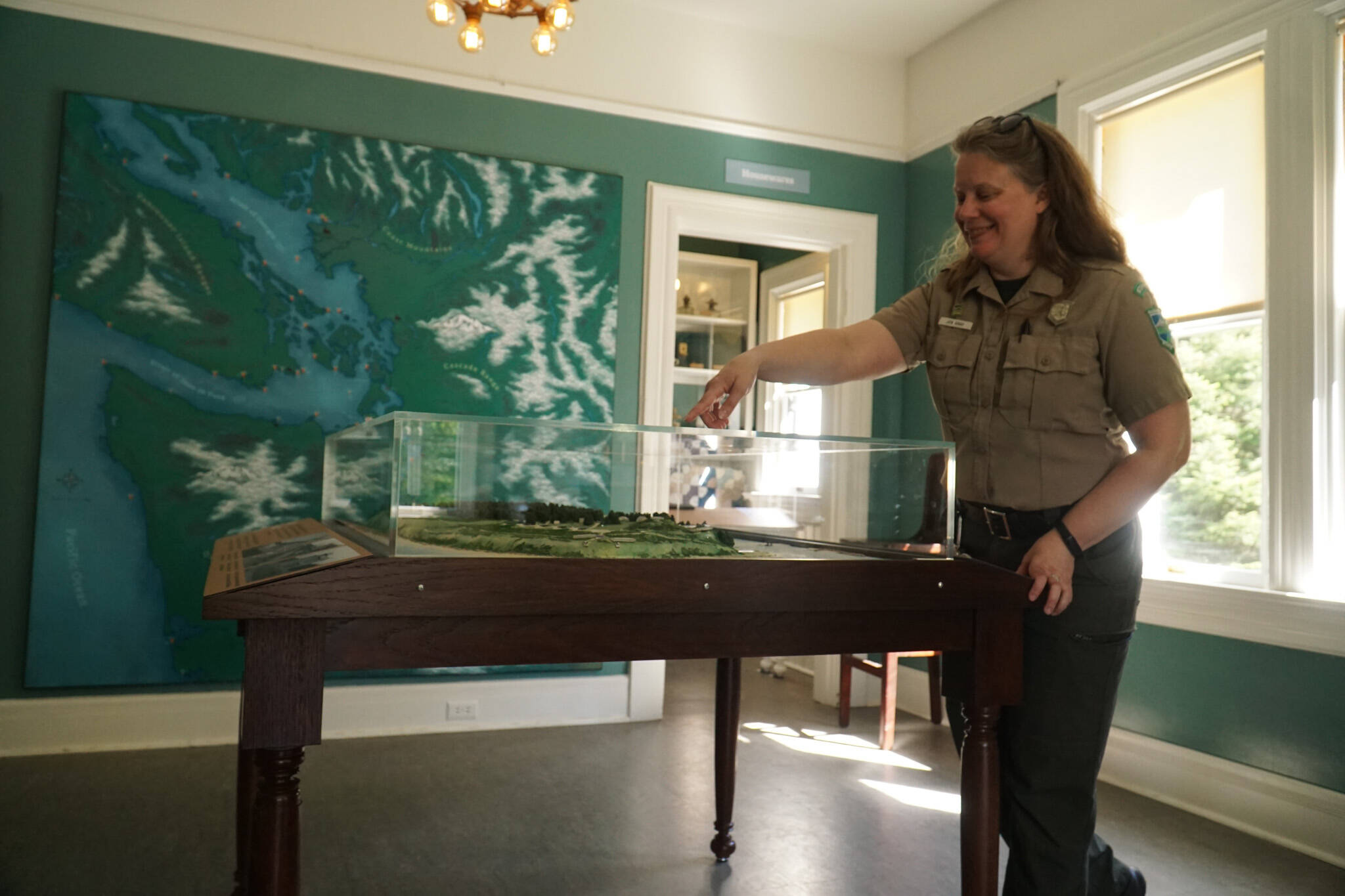The Admiralty Head Lighthouse has some new exhibits whisking visitors away from Fort Casey to a nostalgic realm of lighthouse keeping.
“We really wanted to focus on the story,” said Stephen Wood, an interpretive specialist. “These new exhibits tell more about the lighthouse, more about the lighthouse service, the keepers.”
Entering the newly finished lighthouse interior, guests are greeted by a mannequin donning the formal uniform of a 25-year principal keeper, revealed through authentic patches, cuff embroidery, stars and a lapel.
“That’s what they used to look like,” Wood said. “Granted, ours is a very generic kind of form because we didn’t want to freak people out.”
Formerly a lighthouse keeper himself at the North Head Lighthouse at Cape Disappointment, Wood stayed clear from the mercury poisoning some old keepers attained from bathing the large Fresnel lenses, but he admitted his hair and beard were quite a bit longer at the time.
The first floor of the Admiralty Head Lighthouse is filled with old artifacts, like a Wickie basket, which holds tools while the keeper extinguishes the lamp for cleaning, and a traveling library they used for their months in isolation. The case holds worn hardbacks of authors like Jules Verne, Marcus Whitman and Alice B. Emerson. In the far corner sits items from the keeper’s family.
The exhibit also acknowledges the first peoples of the area, a timeline of lighthouse history, a tabletop model of Fort Casey and a map of every lighthouse along the Salish Sea.
Of course, the room also displays authentic beacons, each weighing over 400 pounds.
Getting the lights into the exhibit took countless hands, strong muscles and ramps, Wood said. People can create replicas, but they can never truly replace the originals.
“Boy, that was a process,” he said. “It was quite nail-biting.”
The room holds two types, a rotating Fresnel lens, which makes a unique flashing pattern so sailors could distinguish between lighthouses, and a fixed one, which reveals no pattern but emits light up to 20 miles into the distance.
“Lighthouses are old technology. It’s very, very old technology,” Wood said. “We have satellites that will tell us our exact position on Earth nowadays, where historically, people that were traversing the inland waterways, the oceans, they needed these lighthouses to know where they are. And so for me, in these new exhibits, we have a lot of interactives that are mainly geared for our younger audiences to try and impart what this old technology did.”
On the rotating lens, guests can push a button which reveals how the crystal within bends light to create the different signatures alerting sailors.
The renovations trace back to 2015, when Washington State Parks began telling the story of the whole coast at Fort Casey, said Sam Wotipka, exhibit developer. This eventually evolved to telling the story of the lighthouse itself as a separate entity from the fort. Funding began in 2019 to perform historic preservation work on the exterior of the lighthouse to bring it back to how it looked in 1902. The interior was the logical next step.
The current lighthouse was deactivated just two decades after it opened, holding its current role longer than it was ever a working lighthouse.
Further, much of the romantic lore of being a lighthouse keeper has likely been applied in hindsight, Wotipka said.
They were sort of the “gas stations of their era,” he said. “They were really carrying structures. They weren’t romanticized the way they are today, which I just thought was kind of a funny way of thinking about it.”
The new exhibit is just a start, said Jen Gray, interpretive specialist. The next step is making the lighthouse more accessible which, to maintain its historical accuracy, will take some creativity.
Because they cannot make the building more accessible itself, the new exhibits will allow those who are physically limited to learn and experience authentic lighthouse artifacts without having to climb the stairs.
This will expand greatly in coming years, she said, envisioning a whole ADA accessible plaza with amenities and exhibits everyone can experience without having to change the authenticity of the historic structures.
Beyond that, the new plaza exhibits will be open year-round, while some areas of Fort Casey are closed for the winter.
“We’re making this a little better and getting the story of the lighthouse to more folks,” she said.


